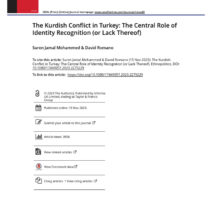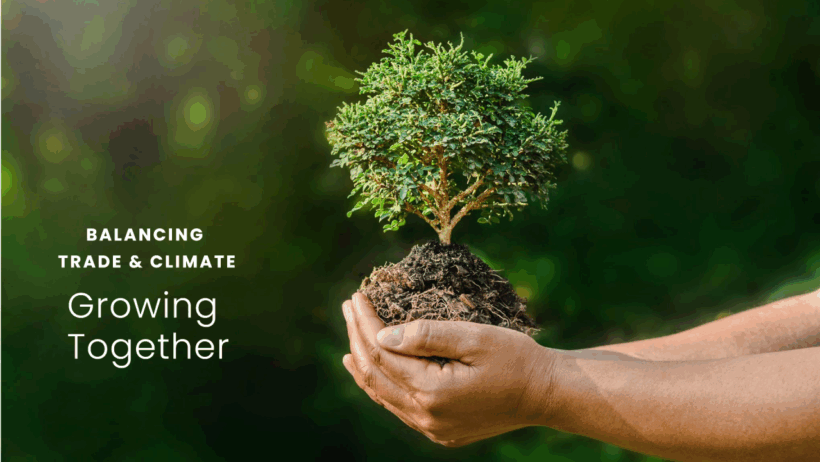Indonesia, as one of the largest archipelagos in the world, boasts a rich tapestry of biodiversity and cultural heritage. However, its food system faces intricate challenges that weave together issues of climate change, economic growth, and food security. In a country where agriculture employs a significant portion of the workforce, the need to balance growth with climate action cannot be overstated. This dual challenge necessitates a profound shift in perspective, one that embraces sustainability while advancing the nation’s agricultural efficacy.
The Indonesian food system is not merely about producing and consuming food; it is an intricate web involving agroecological practices, market systems, and cultural dynamics. As a developing nation, Indonesia has seen tremendous economic growth over the last few decades. Yet, this growth has often come at the expense of environmental degradation. Deforestation, soil erosion, and loss of biodiversity are prevalent issues exacerbated by unsustainable agricultural practices. Transitioning to a resilient food system demands a holistic approach that prioritizes the ecosystem while enhancing productivity.
One of the pivotal aspects of Indonesia’s food system is its reliance on smallholder farmers, who cultivate approximately 80% of the country’s agricultural land. These farmers face numerous challenges, including limited access to resources, fluctuating market prices, and the impacts of climate change. Adverse weather patterns, such as increased rainfall or prolonged droughts, threaten not only crop yields but also farmers’ livelihoods. To overcome these obstacles, it is crucial to equip smallholder farmers with climate-resilient practices and technologies, enhancing their capacity to adapt and thrive in an ever-changing environment.
A promising avenue for transforming the food system lies in agroecology. This approach integrates ecological principles into agricultural practices, fostering biodiversity, enhancing soil health, and minimizing chemical inputs. By employing crop rotation, intercropping, and organic farming techniques, Indonesian farmers can cultivate food that is not only nutritious but also less reliant on synthetic fertilizers, which contribute to greenhouse gas emissions. Agroecology is more than a methodology; it embodies a shift in understanding the food system as a vital component of the broader ecological framework.
Land use change is another critical area that warrants attention. The conversion of forests and peatlands for agriculture significantly contributes to carbon emissions, undermining global climate efforts. Indonesia is known for its vast tropical forests, which are vital carbon sinks. Expanding agricultural lands into these forested areas for palm oil or other cash crops generates short-term economic gains but poses severe long-term environmental threats. To mitigate this, integrated land-use planning is essential. Fostering partnerships between government agencies, civil societies, and local communities can lead to sustainable land management practices that protect natural resources while supporting agricultural productivity.
Furthermore, establishing a robust policy framework is indispensable for steering Indonesia’s food system towards sustainability. Policymakers need to create incentives for farmers to adopt sustainable practices while implementing rigorous regulations to curb deforestation and promote reforestation initiatives. This can include financial support for sustainable farming techniques, including organic certification programs and access to markets selling sustainably produced goods. Encouraging local consumption of sustainably sourced food not only supports farmers but also promotes healthier diets among consumers, creating a virtuous cycle of sustainability.
Climate change poses an ever-present threat to food security, necessitating adaptive measures that can protect vulnerable populations. Indonesia’s commitment to the Paris Agreement highlights its recognition of the need to address climate challenges. However, accompanying this commitment is the obligation to ensure that food systems are resilient. Climate-smart agriculture (CSA) is an innovative paradigm that seeks to improve production while building resilience to climate change. CSA embodies strategies such as the use of drought-resistant crop varieties, efficient water management systems, and improved post-harvest practices to minimize wastage. Implementing these strategies at scale can yield significant improvements in productivity while safeguarding ecosystems.
In addition to direct agricultural practices, enhancing food supply chains is vital in fostering a resilient food system. Effective logistics, transportation, and storage facilities play a critical role in reducing food waste and improving access to markets. In Indonesia, post-harvest losses can exceed 30% for certain crops. By investing in infrastructure and technology, Indonesia can bridge the gap between producers and consumers, ensuring that food reaches markets in optimal condition while reducing the overall carbon footprint of transport logistics.
Engaging local communities also forms a fundamental pillar in this transformative journey. Empowering indigenous knowledge and practices in agriculture can uncover innovative solutions tailored to local environments. Community-led initiatives that emphasize traditional farming practices and biodiversity conservation present an opportunity to harmonize local needs with broader climate objectives. These initiatives can serve as models for scaling up sustainable practices across the country.
Ultimately, Indonesia’s food system embodies a complex interplay of environmental stewardship and economic vitality. A sustainable food system is not merely a goal; it is a necessity for the well-being of present and future generations. By balancing growth with climate action, Indonesia can position itself as a leader in sustainable agriculture. Such a paradigm not only piques curiosity but also offers a hopeful vision for the global community. This vision is one where food security, environmental sustainability, and economic growth coalesce, enabling a future where people and the planet flourish together.
In conclusion, the path towards a resilient Indonesian food system is fraught with challenges yet brimming with possibilities. The synergy between agricultural practices, policy frameworks, and community engagement creates a multifaceted response to the threats posed by climate change. As the world gazes upon Indonesia’s efforts, it becomes evident that the potential for transformation lies within the hands of every stakeholder in the food system. The journey forward will require collaboration, innovation, and a resolute commitment to a sustainable future.







